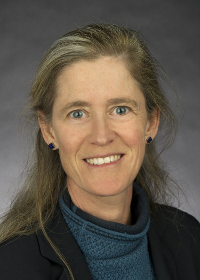Faculty
Professors | Lecturers | Affiliate | Postdocs | Emeritus

Emeritus

Rosemary J. Smith, Ph.D.
Professor
Ecology & Science Education
Office: Life Sciences 335
Smith Group
Behavioral ecology, evolutionary biology, zoology, and biology education.
Education
1991, Ph.D. Ecology and Evolutionary Biology, University of Arizona, Tucson, AZ
1987, M.S. Ecology and Evolutionary Biology, University of Arizona, Tucson, AZ
1984, B.A. Biology, Pomona College, Claremont, CA
Biographical Sketch
Dr. Rosemary J. Smith joined the Department of Biological Sciences at ISU in 1999. She was promoted to Associate Professor in 2001, re-tenured in 2004 and to Professor in 2009. Previous to that she taught for 8-years as an Assistant Professor at Nebraska Wesleyan University (Lincoln, Nebraska), where she received tenure and was promoted to Associate Professor in 1997. Dr. Smith has always combined research and teaching, for example teaching field courses at the Rocky Mountain Biological Laboratory in Colorado while conducting her field research, and mentoring over 50 undergraduate and several graduate students through their research projects as she teaches introductory and upper-level courses. Her research is in two fields: behavioral ecology and science education. For her undergraduate research she studied optimal foraging in barn owls, for her M.S., anti-predator behavior and foraging behavior and the coexistence of desert rodents, and for her Ph.D. tested a trade-off model of species coexistence among a group of ground-dwelling squirrels as well as the evolutionary origins of sociality and anti-predator behaviors. Currently the focus of her biological research is on the behavior, ecology, and evolution of burying beetles (Nicrophorus), particularly population dynamics and reproductive strategies. In biology education she studies the effectiveness of a variety of teaching methods, including methods to enhance teacher training and inquiry-based activities.
Selected Publications
Serve, K., Clements, N. Heinrich, K.K. and R.J. Smith. 2013. The tale of two degrees: the need and power of the Doctor of Arts. College Teaching, 61: 113-115.
Hall, C.L, Mason, A.C., Howard, D.R., Padhi, A. and R.J. Smith. 2013. Description of acoustic characteristics and stridulatory pars stridens of Nicrophorus (Coleoptera: Silphidae): A comparison of eight North American species. Ann. Entomol. Soc. Am. , 106(5): 661-669.
Hartle, T., S. Baviskar, and R. Smith. 2012. A field guide to constructivism in the college science classroom: four essential criteria and a guide to their usage. Bioscene, 38 (2): 31-35. Hopkins, J. and R. Smith. 2011. An inquiry-based field and laboratory investigation on leaf decay: a critical aquatic ecosystem function. American Biology Teacher, Nov/Dec. 73(9) 542-546.
Hall, Carrie L., Nicholas K. Wadsworth, Daniel R. Howard, Eleanor M. Jennings, Larry D. Farrell, Timothy S. Magnuson, and Rosemary J. Smith. 2011. Inhibition of microorganisms on a carrion breeding resource: The antimicrobial peptide activity of burying beetle (Coleoptera: Silphidae) oral and anal secretions. Environmental Entomology 40(3): 669-678.
Hartle, R. Todd, Rosemary Smith, Stephen Adkison, D.J. Williams, Paul Beardsley. 2011. Beyond educator-practitioner binaries: Overcoming barriers to cooperation using professional cultural axes; in: Beyond Binaries in Education Research (eds.: Warren Midgley, Mark A. Tyler, Patrick Alan Danaher, Alison Mander), Routledge Research in Education, Routledge/Falmer, New York.
